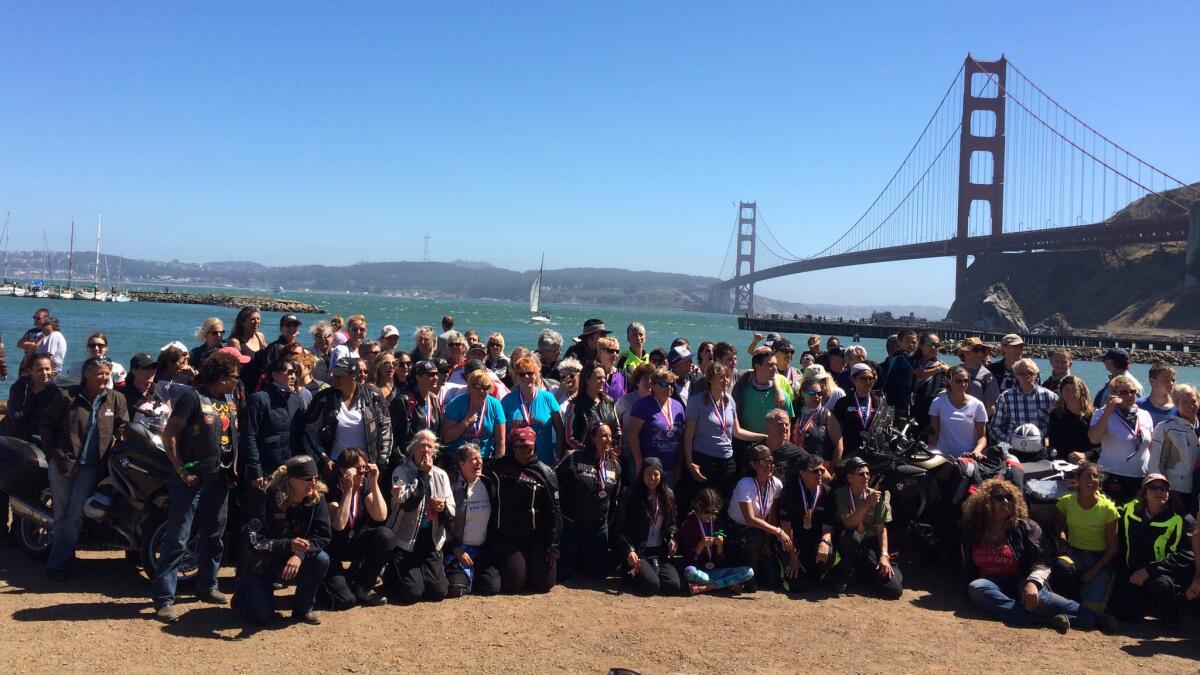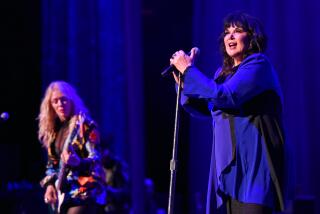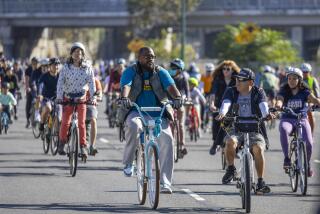Sisters Ride: 100 years later, motorcycle sisters ride again
On July 4 exactly a century ago, sisters Augusta and Adeline Van Buren left Brooklyn, N.Y., headed for San Francisco on a pair of 1000cc Indian “moto-cycles.”
Politically inclined and media savvy, the young suffragettes hoped that their coast-to-coast ride would convince the American military brass to use women in its armed forces as messengers and dispatch riders.
Two months and 5,500 miles later, they were on the West Coast, having braved bad roads, rough weather, mechanical difficulties and small-town municipalities where they were threatened with arrest for wearing trousers.
They did not succeed in persuading the military to use women as riders, but they went into the record books as the first pair of women to ride motorcycles coast to coast and the first female motorists to summit Colorado’s treacherous Pike’s Peak.
Augusta, 24 at the time of the ride, would go on to become a pilot and to fly with Amelia Earhart. Adeline, then 22, became a lawyer. Neither got the chance to serve as a motorcyclist in the military, though a few women did work as dispatch riders in World War II.
But on July 4, exactly 100 years after the Van Burens set out, another group of mostly women motorcyclists — including some of Gussie and Addie’s kin — left Brooklyn, headed for California. Led by two-wheeled tour guide Alisa Clickenger, organizer of the Sisters’ Centennial Motorcycle Ride, the 68 travelers were intending to retrace much of the Van Burens’ 1916 route.
And so they did. On Saturday afternoon, 18 days after leaving New York, Clickenger’s group, having picked up more participants along the way and grown to more than 200 riders, crossed the Golden Gate Bridge and rolled into San Francisco.
At a closing ceremony event that night, a teary Clickenger said, “Can you believe it? We did it.”
The Sisters Ride was born several years back, Clickenger said, when her idea of leading a group of women across America coincided with the Van Burens’ upcoming 100th anniversary. Clickenger, 50, thought the tour should include about 10 riders.
A meeting with Indian Motorcycle executive Robert Pandya — who said his company could help support the ride — convinced her that it might be bigger. Maybe 30. A talk with photographer Christina Shook, who would go on to document the coast-to-coast ride, encouraged her to imagine 100 women, one each for the 100 years since the historic ride.
Then, while scouting locations along the Van Buren route, Clickenger said, “I kept hearing from people, ‘I already talked to someone from your group.’ But my group was only me.”
Clickenger was rubbing up against two other rides that were being planned simultaneously.
One was organized by Dan Ruderman, Adeline Van Buren’s grandson. Another was being set up by Bob Van Buren, whose great-grandfather was the Van Burens’ brother. None of the three groups knew the others were planning similar rides. The Van Buren and Ruderman cousins had never even met.
Van Buren had done the ride with his wife for the 90th anniversary, and was planning something small. Ruderman had bigger ideas.
“I had the idea that 5,500 women should ride, because that’s how many miles it was,” he said. “When Alisa said she wanted to take 10 women, I said, ‘No! You have to think big!’”

The groups pooled their resources and the experienced tour organizer Clickenger took the lead. Soon BMW Motorrad had agreed to sponsor their ride, lending two SUVs and several bikes. Indian, Suzuki and Kawasaki offered to help. Allstate Insurance and Avon Tyres signed on, as did a host of motorcycle-related companies that deal in parts, accessories and services.
Two charities were chosen to benefit, Ruderman said: one to raise money to train women as motorcycle instructors and one to provide benefits to homeless women military veterans.
Ruderman, 57, left Brooklyn riding a BMW, with his 18-year-old daughter Sofie on the back, and accompanied by his 30-year-old son Skyler, who was riding a BMW, with his fiancee seated behind him.
Van Buren, who turned 70 the day the ride ended, was on an Indian, accompanied by his 35-year-old daughter Sarah on a Kawasaki.
Clickenger’s all-expenses-paid package, she said, cost $5,725. Riders who wanted to tag along and arrange their own meals, lodging and entertainment could pay as little as $795 for the whole journey, and considerably less if they wanted to join for just a day.
But they all had to be able to ride. Some took instruction and got motorcycle permits specifically to take the centennial ride — including Ruderman and his son and Sarah Van Buren.
Clickenger, stopping for the night in Page, Ariz., midway through the tour, said by telephone that riding was the whole point.
“I absolutely believe in the empowering magic of two wheels,” she said. “The first idea of this tour was to take a small group of women across the United States who thought they could never do anything like that.”
It was a remarkably mixed group, varying greatly in size, shape, age, ethnicity and orientation, but united in a love of riding and a palpable sisterhood.
Setting out from Brooklyn, the riders’ T-shirts, the ride’s promotional material and the sides of the support vehicles were all emblazoned with the Van Buren sisters’ 1916 motto: “Woman can if she will.”
It turned out that, mostly, she could. Clickenger said only two of her original 68 riders had dropped out — a woman who had fallen and broken her wrist midway through the ride, and another who fell prey to dehydration in Utah.
No one got arrested for wearing pants, Sarah Van Buren said. But in Marion, Iowa, the mayor issued a proclamation and invited everyone to an ice cream social.
The complete ride ran to nearly 5,000 miles. The final day, which started with “kickstands up” at 6:30 a.m., included some of the toughest traveling. Temperatures ranged from 36 degrees near Lake Tahoe to 99 degrees near Sacramento. Several groups got separated from the pack in heavy weekend freeway traffic approaching Marin County north of San Francisco.
Counting heads at the rendezvous point at Ft. Baker, facing the Golden Gate Bridge, Clickenger refused to allow the photographers to take the group portrait until all the riders were accounted for.
“The most important people on this tour are the ones who are most challenged by it,” a worried Clickenger said. “And those are the riders who are still missing.”
The breezy bayside air filled with cheers when the last riders rolled up and got into place for the portrait. More than 200 women, and a handful of men, whooped and hollered and raised their fists in the air: “We did it! We did it! We did it!”
The Van Buren sisters arrived in San Francisco by ferry from Oakland but were so far behind their original schedule that members of the San Francisco Motorcycle Club, who had promised to meet them, had given up and gone for a ride, club historian Brian Holm said.
But this afternoon, members of the 112-year-old club, the world’s second oldest, waited patiently until all the riders were in.
Then club officers escorted the Sisters parade-style across the bridge and through the city.
“We let them down in 1916,” said the club’s past president, Kalle Hoffman. “So we’re excited about having the opportunity to do it right this time.”
Phoning from Napa Valley the following day, Sarah Van Buren called the trip “life-changing.” Though she would not be riding back to the East Coast, as some of the women planned to do, she was ready for her next ride.
“This was a very significant thing to do,” she said. “There’s no going back.”
ALSO
How Roland Sands became one of the motorcycle industry’s top entrepreneurs
‘Easy Rider’ bike designer Cliff Vaughs lived many lives: Photographer, filmmaker, boat captain
Carmel winery owner turns his personal collection into the West Coast’s biggest motorcycle museum







